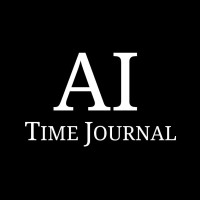The first step to follow in a literature review requires the identification of the text to review. The reviewer must read and then critique the text. The literature reviewed can include books or published scientific papers. Reports published by an institution or government can also be reviewed.
In literary studies, the application of data analytics has been considered. It is done using specialized systems and software. Reviewers use it to discover data, interpret it, and communicate critical patterns. AI and machine learning, and NLP are useful technologies in data analytics.
How Data Analysis Works with Literary Works
How you conduct data analysis in literary work depends on the research question. The research question can be about the risk, prevalence, effect, or association. You need to compare several literary works to see how they relate. That means doing quantitative studies before focusing on qualitative ones. Correctly identify the steps to follow for the type of study you are conducting.
- Search for literature that will answer your question
- Do not rely on one source but identify multiple sources.
- In each source, identify the specific data that will be useful to you.
- Choose only study results that will provide meaning to your research question.
- Have the research question visible on your computer all the time.
- Search the literature that still exists and decide how to include it in your analysis
- Arrange the data according to how it is related to the subject of research (organize it thematically)
- Conduct a data synthesis
- Conduct a data analysis
- Do your data presentation
It is not enough to just read a book to write an essay and do data analysis. If you are analyzing Frankenstein, your first step is describing the plot. The next step is to analyze the characters, their role, and comparisons. The analysis report of your research paper needs to be credible. A large database with “Frankenstein” essays to read on GradesFixer is available. You can read it to help you understand the main points of the book. They are free essay examples to help a student get ideas on research work.
How Data Analysis of Literary Works Can Be Used in Research
The reasons for conducting data analysis in the literature review are:
- Create a knowledge base on the book/topic
- Identify the characters and categorize them
- Identify the language used in the literature
- Identify the theme and style of writing used by the author
- Identify any grammatical inconsistencies and the work/context is related to other works
Researchers need to conduct a literature review in their research work. The researcher investigates data and sources to extract facts. They use the facts to reach a new conclusion. They must compare other research works previously done. Data analytics of literary works will help researchers achieve several goals.
- Conclusively interpret existing literature
- Pinpoint dialect contradictions between various literary works
- Identify gaps in previous research for further exploration
- Inform the reader about how the information is relevant and coherent
- Calculate the impact the current information has on the published work
Thorough data analysis in a literature review will help a researcher have a strong base of knowledge in their area of research. It helps them get ideas for what direction to follow when conducting new research. During investigations, new questions may arise. Data analysis in literature work will help them know who to consult. The researcher will know where to get quality answers to their questions.
Features of Data Analysis of Literary Texts
When conducting data analysis of literary texts, several steps are important. You must choose the text to analyze carefully. Decide the elements to focus on and create a formula for analyzing your ideas. Build your literature-based evidence and organize them. When writing your essay, these features will be necessary to pay attention to.
- Know the characters
- Understand the setting of the story
- Identify the plot, what the problem deals are with, and the solution
- Know the sequence
- Understand the metaphors, symbols, and style of writing
The key idea is to know who is in the story and the time. Understand the events in the story and how they happen. The plot tells the design of the events used to build the story. Characters show the people involved in the story. The setting shows the place the actions take place. Conflict shows how the protagonist and antagonist oppose each other.
During data analysis, capture the key elements that show the importance of the story. Look out for features that help improve understanding of the text. Interacting with the text should provoke deeper thinking and responses.
Conclusion
Data analysis of literary texts requires the researcher to develop questions that require deeper exploration. It helps identify the key characters, the language used, and the special style of writing.
Analysis helps researchers create a conclusive interpretation of the literature. It provides them with a strong base of knowledge in their area of research work. It provides them with a base for data synthesis, analysis, and presentation.

